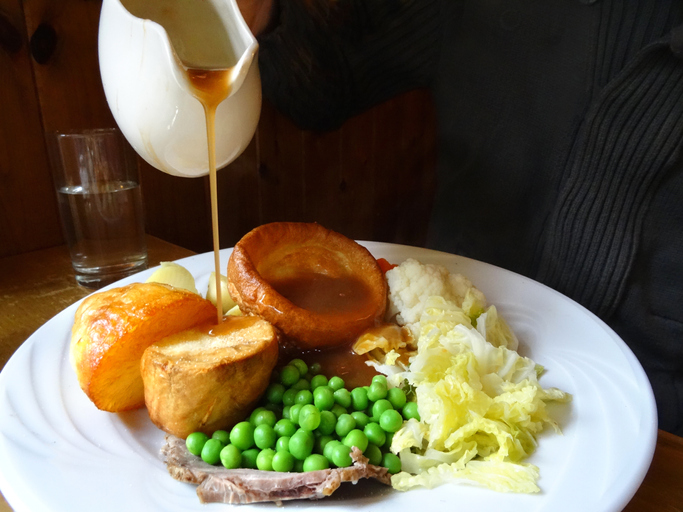Why polymer scientists make great cooks

Okay, so my wife may disagree. However, the long chain nature of a lot of food products (i.e. their polymeric nature) allows us to at least understand the physics behind the behavior of food.
Cooks have known the secret of thickening sauces and gravies with a fairly small amount of flour or cornstarch. A key aspect of this process is to add the flour or starch when the sauce is fairly cool, mix well, and THEN apply heat. At some point in the heating process, the sauce will magically start thickening (i.e. the viscosity increases).
So what is happening? First off, the key material is starch, which is found in flour and of course corn starch. Starch is a polysaccharide, or a polymer made up of glucose (sugar) repeat units with glycosidic bonds. Starch is derived from various types of plants, and can have varying degrees of amylose and amylopectin, the two types of molecules making up starch. At room temperature, starch is not soluble in water, due to its crystalline nature. The molecules in the starch can fold themselves into tightly ordered sections, with thousands of the amylose and amylopectin molecules tightly bound into small micron-sized particles. This is how they initially start in the sauce. The small particles do not affect the viscosity in any measurable way. Once the sauce is heated, however, sufficient energy is put in the starch granules to overcome the melting point, and the chains start to unfold, stretching out and entangling with other chains. The long, entangle molecules of the amylose and amylopectin increase the viscosity of the sauce, thereby 'thickening' it.
Having problems with lumps in your gravy? The gravy was too warm when you added the flour or corn starch, and the starch granules began to swell and expand while they were still in a bundle, preventing them from spreading out in the gravy. By adding them to cool gravy, you can distribute the granules before they expand and entangle.
This thickening behavior of gravy with temperature can be nicely captured by shear rheometry.